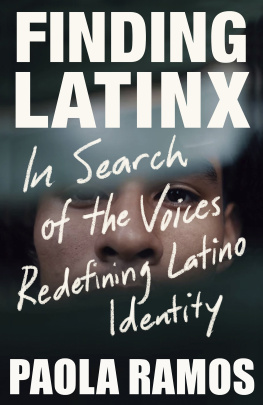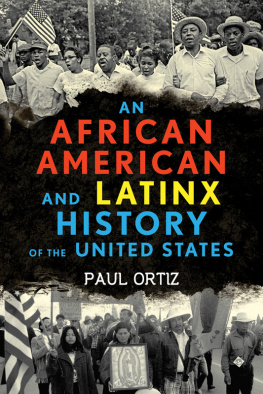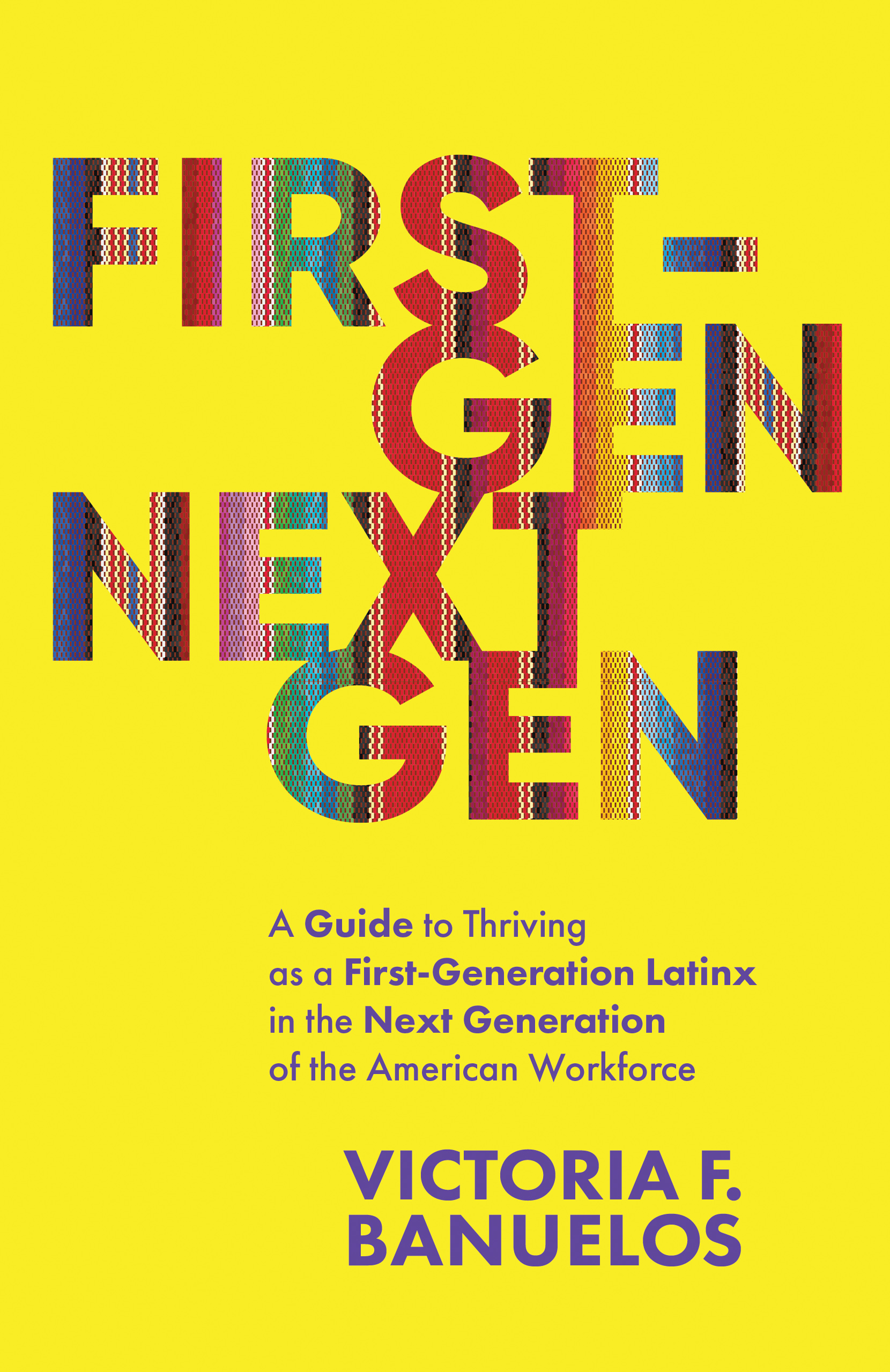A Guide to Thriving as a First-Generation Latinx in the Next Generation of the American Workforce
Victoria F. Banuelos
Foreword
Written by Frank Carbajal, founder of the Silicon Valley Latino Leadership Summit and Es Tiempo
I didnt have a word for it then, but I learned about inequity when I was seven years old.
As a native Spanish speaker, I did not learn to speak English until the second grade, when I was integrated into a mainstream school. I noticed that most of the students who were white and Asian lived in two middle-class neighborhoods known as Evergreen and Creekside in San Jose, California. Many of their parents worked in the electronics industry. These neighborhoods were about three miles from where I lived. My peers appeared to have everything: wealth, connections within the community, English-speaking parents, and opportunities. However, I continued on at this school because my father was determined to instill confidence in me and protect me from any negative influences in the neighborhood where I lived.
I may not have possessed the material and generational wealth of the kids around me, but what I did have at home was warm, reassuring, unconditional love.
My working life started when I was eight years old. Every summer, my parents demonstrated the value of a strong work ethic to my siblings and me by taking us to pick cherries, apricots, and strawberries in the Santa Clara Valley. This valley was the precursor to what we now know as Silicon Valley. The most difficult part for me in the summer was waking up between 4:30 and 5:00 a.m. and getting ready to head out for another very long day of manual labor. I remember splashing water on my face to stay awakeI was too young to drink coffee at the time. Without a word of complaint or rebellion, all five of my brothers and sisters would pack into our fathers 1978 pink Datsun with silver flames along the side.
We did not bother with seat belts, yet I felt safe because I was with my family. While some kids were spending their summer at camp, this job taught me to respect the labor of migrant workers early on, especially because I was a migrant student myself. I vividly remember gazing out that Datsun window while driving to Cupertino to pick produce. Our car would wind in and out of the neighborhoods that would eventually house the headquarters of early Silicon Valley companies like Apple and Google. We may even have driven past the famous garage where Steve Jobs and Steve Wozniak founded their legacy.
Lets fast-forward to when I was twelve. Some of the kids in my neighborhood had joined a gang in the barrio. My father, wanting me to stay away from them and out of trouble, would keep me busy. I would often go with him on the weekend to clean corporate offices, while he juggled a full-time job at a cannery, plus a part-time job at a janitorial company. I believe his motive was to make me realize the significance of education. He did not want me to work as hard as he had to; he wanted me to work smarter.
I spent many hours daydreaming on these cleaning weekends, looking out at the venture capital mecca of Sand Hill Road. On one of these occasions, I was cleaning the executive office of the Latino CEO who managed a successful tortilla company. The vacuum made a whirring sound as I slowly pushed it across the carpeting, taking a look at everything in that CEOs office. I breathed in the rich smell of mahogany and admired the awards of recognition he received as an outstanding Latino. I also enjoyed looking at his recreation rewards hanging on the wall and the ticket stubs from the first Super Bowl hosted in the Silverdome, all carefully displayed in a case. My father walked in and interrupted my reverie, saying, Hijo, this is the reason you need to concentrate in school and concentrate on going to college.
During that era, Silicon Valleys primary industry was electronics, and the circuit board was all the rage. My family was not a part of this electronics and tech world, and I hadnt been exposed to this language or code. This language was the gateway to Silicon Valley, and I didnt feel like I was a part of it, even though I lived there. Since then, Ive taught myself and others, many of whom are young Latinos, the ways of the Valley, challenging and changing the face of a tech-oriented professional. We all need a guide.
As a first-generation professional, I can tell you that I did not have any sort of navigational compass to show me the way of the corporate world.
Through her book, First-Gen, NextGen, Victoria Banuelos created a compass. Through the stories she shares, she guides the Latinx community to see the bigger picture of life after a college education. Whether youre a millennial, a Gen Zer, or even a corporate leader, this book will take you through a journey of understanding how first-gen Latinxs can grow in their careers.
Young readers will learn that the path to success is ongoing after reading the interviews Ms. Banuelos conducted c incredible Latinx business leaders and entrepreneurs.
Executives will understand that in order create a talented leadership pipeline, we first have to develop an inclusive, 365-degree mentorship and reciprocity framework. It is necessary to have diverse individuals, including first-geners, to mentor the NextGen of workers toward upward mobility.
Diversity and inclusion allies will develop a better sense of what its really like to be underrepresented, unheard, and often unseen in the American workplace.
As we strive for more inclusivity and representation in the workplace, I am grateful the Latinx community has a book like First-Gen, NextGen as a source of inspiration and shared experiences for Latinx students and young professionals to succeed in their careers.
Preface
When you were a teen, how did you imagine The Real World? Were you working a corporate job? Running a business? Did you picture yourself paying bills, struggling to write a response to a passive-aggressive email, or researching how to negotiate your salary? Or was it a completely blank slate?
There are so many aspects of The Real World that I was not prepared for and never thought about. Suddenly, I found myself talking about that very topic to a roomful of high school students.
A Minority in the Minority
The anxiety I carried in my stomach felt foreign. My eyes darted to the Visitor badge on my shirt as I walked down a long hallway in a vaguely familiar high school. It was late May and I was taking note of the posters lining the wallssome were congratulating high school seniors on their college acceptances and others were colorful advertisements for the upcoming prom. The familiar aroma of lunch in the cafeteria came wafting down the hallway and took me right back to my own high school experience. Seven years had elapsed since I last had to worry about SATs and college admissions, but there I was, instantly feeling seventeen again.
I walked into a classroom filled with mostly Black and Latinx students. A high school in Los Angeles had asked me to host a roundtable where students could ask any questions about college life and real life. Id answer from my perspective as a twenty-something Latina.
Ive since hosted these roundtables year after year, with thirty different kids each time, but their fears, concerns, and questions were similar. Though it took a few tries, I was soon able to translate what they really wanted to ask.
What was the hardest part about college for you?
Translation: Will I also struggle with that, and is it normal?










